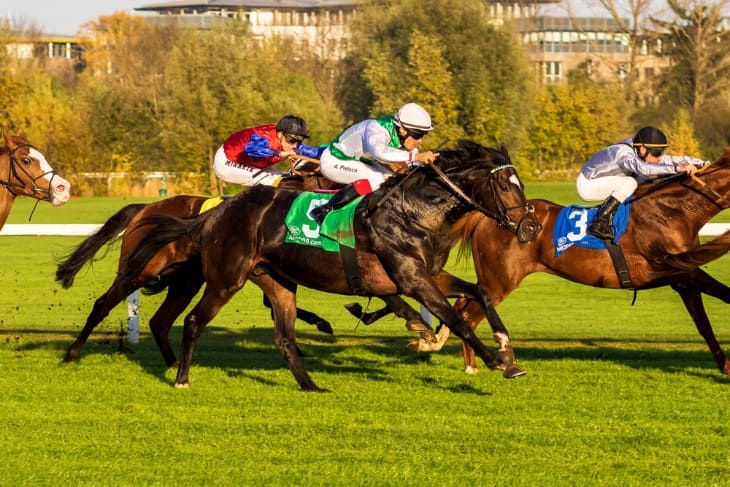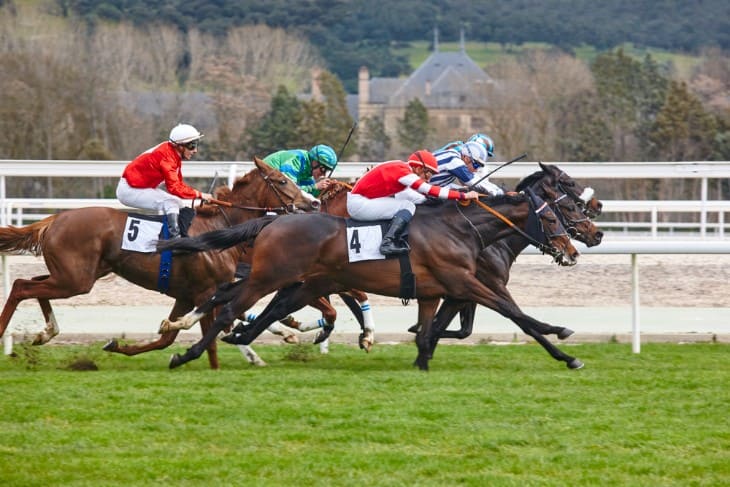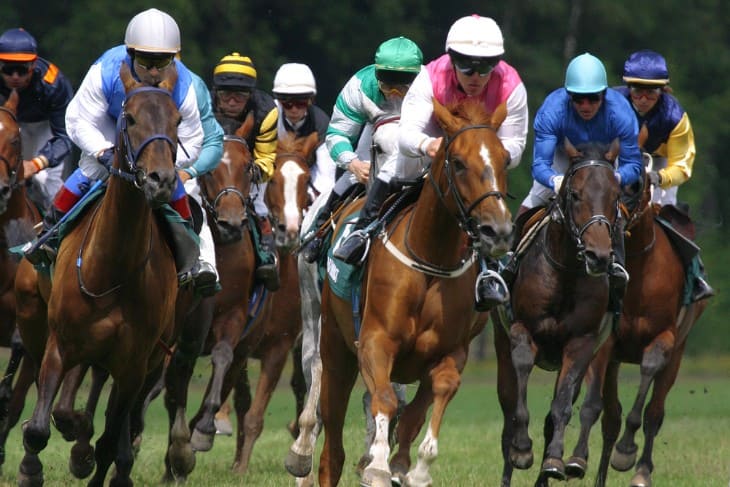- Types of Forecast Bets: Straight, Reverse, and Combination
- The Grand National: A Brief History and Significance
- Analysing Past Winners: Trends and Patterns in the Grand National
- Key Factors Influencing Forecast Betting in Horse Racing
- Strategies for Forecast Betting: Tips from the Experts
- Calculating Payouts in Forecast Betting: An In-depth Guide
- Risks and Rewards: A Balanced View of Forecast Betting
- Conclusion
Forecast betting, a popular form of wagering in horse racing, involves predicting the horses that will finish first and second in a race, in the correct order. This form of betting, known in the United States as an "exacta," requires a higher level of skill compared to simply picking a single winner. The bettor must accurately assess not only which horse is likely to win but also which one will follow as runner-up. The mechanics of placing a forecast bet are straightforward: a bettor selects two horses and places a bet on them finishing first and second in a specified order. If the horses finish in the chosen order, the bettor wins. The complexity of this bet lies not in its placement but in the challenge of correctly predicting the race outcome.
The payout in forecast betting depends on the odds of the selected horses. Unlike traditional bets where odds are fixed at the time of the wager, forecast bet payouts are determined by a pari-mutuel system, where all bets of a particular type are pooled and the payout odds are calculated by sharing the pool among all winning bets. This system means the final odds can fluctuate based on the amount of money wagered on different combinations, making forecast betting both challenging and potentially rewarding.
Types of Forecast Bets: Straight, Reverse, and Combination
Forecast Betting encompasses several variations, each offering different levels of complexity and strategy. The most straightforward type is the Straight Forecast, where bettors predict the first and second place horses in the exact order. This bet requires precision and a deep understanding of the race dynamics.
The Reverse Forecast, in contrast, allows for more flexibility. Bettors still choose two horses but win if these horses finish in the first two places in any order. This bet type doubles the stake since it essentially places two straight forecast bets.
- Straight Forecast:
- Predict the first and second place horses in exact order.
- Higher risk, but potentially higher reward.
- Reverse Forecast:
- Two horses to finish in the top two in any order.
- Requires double the stake of a straight forecast.
Lastly, the Combination Forecast bet expands the possibilities further. Bettors select three or more horses and win if any two of them finish in the top two positions. This type of bet increases the chances of winning but also multiplies the stake, as it covers all possible combinations.
- Combination Forecast:
- Choose three or more horses.
- Covers all permutations of these horses finishing in the top two.
The Grand National: A Brief History and Significance
The Grand National, a pinnacle event in British horse racing, holds a special place in the context of Forecast Betting. This historic race, first run in 1839 at Aintree Racecourse near Liverpool, has grown to become one of the most challenging and prestigiouse steeplchases in the world. The race features a distance of over four miles, demanding exceptional endurance and skill from both horse and jockey.
The Grand National's significance in forecast betting is due to its unpredictability and the large field of runners, often exceeding 40 horses. This unpredictability, stemming from factors like the course's demanding nature and varied obstacles, adds an extra layer of complexity to forecast betting. The race's high profile also means that it attracts a wide range of bettors, from casual punters to seasoned experts, all looking to predict the outcome of this iconic event. The Grand National not only tests the mettle of the participating horses and jockeys but also challenges the analytical skills of those engaging in forecast betting, making it a quintessential event for this form of wagering.
Analysing Past Winners: Trends and Patterns in the Grand National
In the realm of Forecast Betting, analysing past winners of the Grand National offers invaluable insights. Historical data reveals patterns and trends which can guide bettors in making informed decisions. For instance, the age of winning horses tends to fall within a specific range, with most victors being between eight to eleven years old. This trend is crucial as it reflects the maturity and experience necessary to navigate the challenging Aintree course.
Another pattern observed is the significance of the horses' previous performance. Winners of the Grand National often have a proven track record in steeplechase races, indicating that experience in similar conditions is a key factor. Additionally, the weight carried by the horse also plays a crucial role. There is a tendency for horses carrying a weight within a certain range to perform better, balancing the need for endurance and speed.

Key Factors Influencing Forecast Betting in Horse Racing
Several key factors influence the outcome of horse races, and understanding these is essential for successful Forecast Betting. One of the primary factors is the form of the horse. This includes its recent performance in races, any known injuries, and its training regime leading up to the race. A horse in good form is more likely to perform well, making it a strong candidate for forecast bets.
Another crucial aspect is the condition of the race track. Factors such as the type of surface, weather conditions, and the course layout can significantly impact a horse's performance. Some horses perform better on dry, fast tracks, while others excel in wetter conditions. Understanding these preferences can guide bettors in choosing their forecast pairs.
- Horse Form:
- Recent race performance.
- Training and health status.
- Track Conditions:
- Type of surface (turf, dirt, synthetic).
- Weather impact and course layout.
Moreover, the jockey's experience and skill set are vital. A seasoned jockey can make strategic decisions during the race, navigating the course efficiently and making real-time adjustments based on the horse's condition and the competition. Therefore, considering the jockey-horse pairing is an essential aspect of forecast betting strategy.
Strategies for Forecast Betting: Tips from the Experts
In Forecast Betting, strategies play a pivotal role in increasing the chances of successful outcomes. Experts in the field often suggest a thorough analysis of both the horses and the race conditions. One key strategy is to focus on horses that have consistently performed well in similar race conditions. This involves studying past performances, considering the track conditions, and the distance of the race. Another crucial element is the form of the horse, including its recent performance and any known injuries or training issues.
In addition to analysing horse performance, understanding betting markets is vital. Odds offered by bookmakers can provide insights into the expectations for the race. However, it's important to remember that odds also reflect the betting public's opinions, which are not always accurate predictors of race outcomes. Successful forecast betting often involves finding value bets, where the potential payout outweighs the perceived risk.

Calculating Payouts in Forecast Betting: An In-depth Guide
The calculation of payouts in Forecast Betting involves understanding the pari-mutuel system, commonly used in horse racing. Under this system, all bets of a particular type are pooled together. The total pool is then shared among the bettors who have made winning forecasts. The payout depends on the number of bettors who have chosen the winning combination and the total amount of money wagered.
To calculate the potential payout, the total amount bet on the winning forecast is subtracted from the overall pool, and the remainder is divided among the winners. This means that the payout can vary significantly depending on the popularity of the chosen horses. Longshots, or horses with lower chances of winning according to the public opinion, can result in higher payouts if they do win, as fewer bettors will have chosen this combination. Conversely, a forecast involving favourites will typically result in a lower payout due to a higher number of winners. Understanding these dynamics is crucial for anyone engaging in forecast betting, as it helps in making informed betting decisions and managing expectations regarding potential returns.
Risks and Rewards: A Balanced View of Forecast Betting
Engaging in Forecast Betting presents a unique set of risks and rewards that bettors must carefully consider. One of the primary risks involves the inherent unpredictability of horse racing. Factors such as horse health, race conditions, and even unforeseen events on the race day can significantly affect the outcome, making forecast bets more challenging than simpler wager types. Additionally, the requirement to correctly predict both the first and second place finishers in exact order (or in any order for reverse forecasts) adds a layer of complexity and uncertainty.
However, the rewards of forecast betting can be substantial. The potential payouts are often higher compared to other types of bets, especially when longshot horses are successfully included in the forecast. This higher risk-reward ratio attracts many bettors who seek the excitement and potential for significant returns. It is essential for bettors to approach forecast betting with a balanced perspective, understanding both the potential gains and the risks involved.
Conclusion
In conclusion, Forecast Betting in the Grand National represents a fascinating intersection of tradition and innovation. This form of betting, with its rich history and evolving nature, continues to attract a wide range of enthusiasts, from casual punters to serious bettors.
The Grand National, with its unique challenges and prestige, remains a cornerstone event for forecast betting. Its unpredictability and the sheer thrill of the race ensure that forecast betting will continue to be an integral part of this iconic event. As the sport of horse racing grows and adapts, forecast betting is likely to see further innovation, attracting new generations of bettors and maintaining its status as a favoured wagering option in the world of horse racing.







